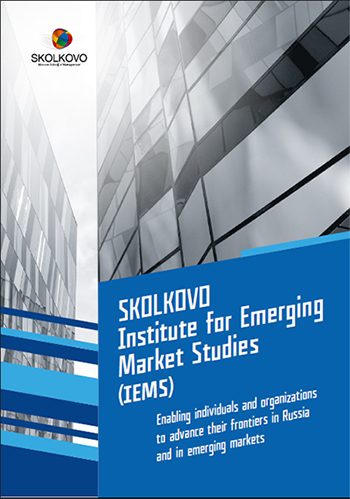The Growth Elixir: Excaping the Middle-Income Trap in Emerging Markets
There are few places in the world where quality of life was not better in 2010 than in 1960, although certain regions have shown incredible success and others have stagnated. Growth paths have not been self-sustaining in many countries, with plateau effects after attaining certain thresholds of per capita income. This phenomenon has been observed in nearly every region of the world and at every income level. Researchers from the World Bank have dubbed this problem of fading growth “the middle-income trap.” With the bulk of emerging markets now approaching middle-income status, and given the reality of slower growth for many countries, are there lessons to be learned from some of the highest-flying performers of the past three decades?
A new report examines the middle-income trap concept and current fashionable policy recommendations for governments to break out of the trap. The key finding of the analysis of emerging market performance over the past 30 years is that the fundamentals still matter. Simply put, macroeconomic stability is necessary at all levels of development, and governments are advised to keep their eyes on maintaining macroeconomic stability (especially in regards to inflation) at all times. Even growth that has been achieved can be wiped out by just one experience of high levels of inflation, and thus, in order to avoid the middle-income trap, macroeconomic stability, and especially fiscal prudence, must be adhered to. This includes avoiding inflationary temptations, while keeping the overall size of government low.
The report also finds that institutions are necessary, both political AND economic. In the first instance, the growth of government is generally a sign that a growth slowdown is imminent, often leading to crowding out of private investment and a diminution of the same entrepreneurial spirit that sparked growth in the first place. India is a prime example of this lesson.
Beyond merely the size of government are the institutions that make up the government. In many of the emerging markets we examine, political instability has served as a continuous drag on growth, as in Argentina and sub-Saharan Africa. Thus, as part of a pro-growth package of reforms, countries should strive to construct or solidify political environments that are routine, predictable, and constrained by checks and balances. Policymakers, if they truly wish to help their countries to grow, should be prepared to pursue prudent policies but also to step aside if the polity demands it.
Finally, the report concludes that policies that encourage the growth of market-oriented economic institutions should be pursued. This list includes property rights, judicial independence, and labor market flexibility, as well as business environment reforms that can help these institutions to emerge and thrive. Many of these crucial “good” economic institutions are still lacking in emerging markets, with property rights being the most important. Other countries have also focused on “bad” institutions that do not contribute to growth, such as tax administration, at the exclusion of other expenditures that could have aided growth.
Given these results, the author concludes that if a country’s government focuses on these simple prescriptions, the middle-income trap will one day be irrelevant to the study of economic growth.
Contact us
-
SKOLKOVO IEMS
+7 495 539 30 03
SKOLKOVO Sustainable Business Center monitoring
Leave your contact details and we will send you our monthly monitoring



